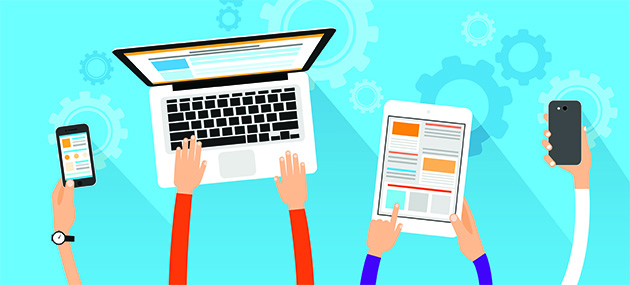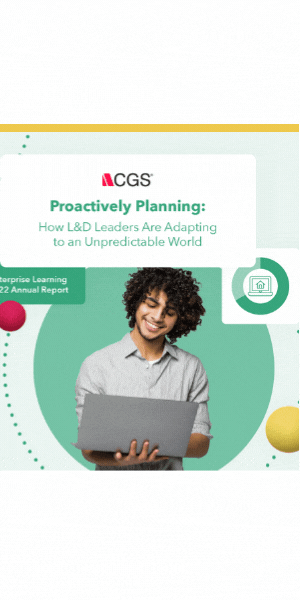Topics
From Baby Boomers to Gen Z: Corporate Learning that Spans the Generation Gap

For learning programs with maximum impact, focus on quality and flexibility, not generational differences.
There’s a tendency to talk about people from different generations as though they were members of completely separate species, ones that have nothing in common with each other at all. Notice the number of articles devoted to describing the bizarre and mysterious behavior of millennials — in terms of what they want at work, the things they say, even the sounds they like in songs.
Maybe there’s some truth to all this — preferences and tastes shift some from generation to generation, different experiences (like living through the great recession) might change how groups of people of different ages think. It’s possible, however, that people are focusing on generational differences to the point of forgetting that different age groups have a lot in common. Research from Achieve Global, for example, suggests that people perceive generational differences as much bigger than they actually are.
It’s important to keep fact this in mind during the development of any corporate learning programs. You don’t necessarily need to create entirely different content for employees of different ages. At the same time, however, a group of diverse employees may have a diverse set of learning needs. Instead of trying to tailor learning programs to appeal to a set of superficial traits that may or may not be common among a single generation, you should instead aim to create top-quality learning content, and to do it in a way that can be adapted based on the different needs and preferences of learners on your staff.
Don’t focus on the differences
Creating content that fits the needs of different users doesn’t necessarily need to be incredibly complicated. It’s obviously critical to have a clear picture of the knowledge you want to deliver with your learning program (which should in turn be determined based on the business needs you’re trying to meet with your program).
Say, for example, that you are designing an employee onboarding program. You’ll might be aiming to deliver both important “big picture” company information — about its history and culture for example — as well as practical knowledge that will ease employees’ transition into the company, like HR policies and employee benefits. That information will form the core of your content. Meeting the needs of a diverse set of employees simply requires looking at the needs of learners when choosing what format to present it in.
Rather than a single long document, for example, perhaps new employees would absorb more and be more engaged with video. But maybe they would still prefer certain components be put into pdf format so that they can be used as a reference easily. Interactive content could be somewhat more involved, production-wise, but it can also be incredibly engaging. It’s just a question of knowing what you have the resources and ability to create, and what formats and content types will resonate with employees. Some materials could be created in multiple formats to suit the need of different learners without doubling the workload: a film shoot could be edited into both shorter and longer videos, to be used for group (longer) or individual mobile viewing (shorter). With strong material, and flexibility in terms of formats, you can meet the needs of a wide range of employees.

To know what will be engaging to your audience, you need to know who they are. What will they respond to in a learning context? What kind of time constraints are they under? Do they prefer to consume content (learning, or otherwise) on their mobile phones, desktop, or elsewhere? While immediate impressions may be that millennials are mobile and older learners definitely aren’t, the gap in terms of mobile use between generations isn’t all that big, and it’s continually narrowing. The story is similar for social media, which is being used by more and more organizations as a successful part of learning programs: 89% of 18-29 year-olds use social, but so do 65% of 50-64 year-olds.
Test for success
One of the most effective ways to determine what content and what formats convey information the most effectively is by involving a number of employees in their development (the type of employees who would ultimately be end-users for these learning materials). By getting feedback on what works and what doesn’t, what’s clear and what’s confusing, as well as how people like to learn things, you’ll cut back on the risk of creating something that falls flat and doesn’t accomplish what you set out to do, whether because it’s generally not strong enough, or because its format is such that employees aren’t going to pay attention to it.
If you’re able to do that — to learn from the range of people you’re creating content for, then the biggest component of making sure materials work for different generations is avoiding skewing too hard, intentionally or not, towards a single age group. Don’t, for example, pack your training video full of references to One Direction, or require employees to have a Snapchat account to access materials, unless you’re hoping to reach only a narrow segment of your own employees.
So, learning, if you’re doing it well, isn’t a question of creating completely different materials for every different age group in your company. It means understanding what you’re trying to convey, understanding how your employees want to consume it, and adapting how you present it accordingly. Add in flexibility in terms of formats to meet the needs of different types of employees, and you’re set up for success.

